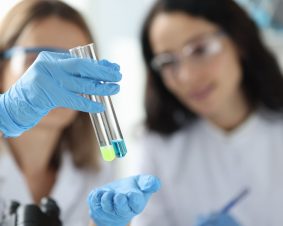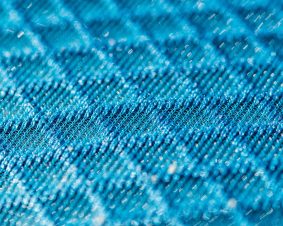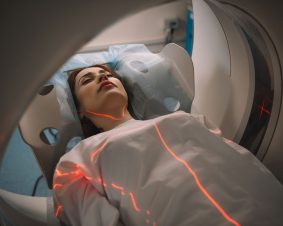 >
Spotlight May 2022: Nano-ghosts” – Risk assessment of submicron-sized particles in food biased towards fictional “nano”
>
Spotlight May 2022: Nano-ghosts” – Risk assessment of submicron-sized particles in food biased towards fictional “nano”
The European Commission has issued a ban on the colorant titanium dioxide in food. Titanium dioxide, which provides a nice shine and bright white color, can potentially damage genetic material.
We chose a review article from 2022 for the May 2022 Spotlight that addresses the risk assessment of food-grade titanium dioxide (E171) and the resulting potential bias against nanoscale titanium dioxide.
The authors are not interested in avoiding a ban on the use of E171 in food. Rather, it is important that the same bias against a fictitious “nano” hazard be avoided in the future.
The E171 case illustrates how the risk assessment of manufactured particulate food additives is potentially biased toward a supposed nanoscale particle hazard.
The authors summarize that, for example, subacute studies show that oral exposure to E171 does not cause toxicity in rodents or that chronic toxicity studies show that oral exposure to E171 does not cause carcinogenicity or other long-term adverse effects in rodents, even when tested at high doses.
The objective of this review is to reassess the literature on the toxicity of titanium dioxide particles, focusing on studies that are directly relevant to the evaluation of E171.
Original Publication:
Naegeli, H. and C. Gsell (2022). „“Nano-ghosts“: Risk assessment of submicron-sized particles in food biased towards fictional „nano“. EXCLI J 21: 279-299.

Weitere Spotlights
Spotlight September 2023: Fishing for raw materials with proteins
The so-called rare earth elements such as neodymium, dysprosium or cerium are elements that are of great importance for the energy transition; among others they serve as components of magnets in generators for electric power generation, act as luminescent materials in energy-saving lamps or as part of the car exhaust catalytic converter. The global production […]
Read moreSpotlight February 2023: New sustainable and promising method to give cotton textiles an antiviral and antibacterial finish
Textiles have been the subject of research into functionalization for many years, especially also to repel bacteria and viruses. Since the development of nanotechnological processes, there have been many attempts to incorporate UV protection with nano-titanium dioxide, or to provide textiles with anti-bacterial properties with nanosilver (see cross-sectional text “Nanoparticles in Textiles”). But nanosilver has […]
Read moreSpotlight July 2021: The Path to Digital Material Research – It is never too late to start
Machine Learning, Artificial Intelligence, Big Data…. Have you read these words lately? No, these are not just buzzwords. The digitalisation of science is an evolving topic that is gaining importance with each passing day. That is why this month we would like to introduce you to the article “Digital Transformation in Materials Science: A Paradigm […]
Read moreSpotlight December 2022: Fighting tumors with micro robots
When we, the DaNa team as operators of the website nanopartikel.info, write about nanobots, i.e. nanometre-sized machines, we point out that these machines belong to science fiction, may even remain a utopia – i.e. never realisable. On the significantly larger micro-scale, however, small machines are conceivable that could help in the therapy of diseases, e.g. […]
Read more


